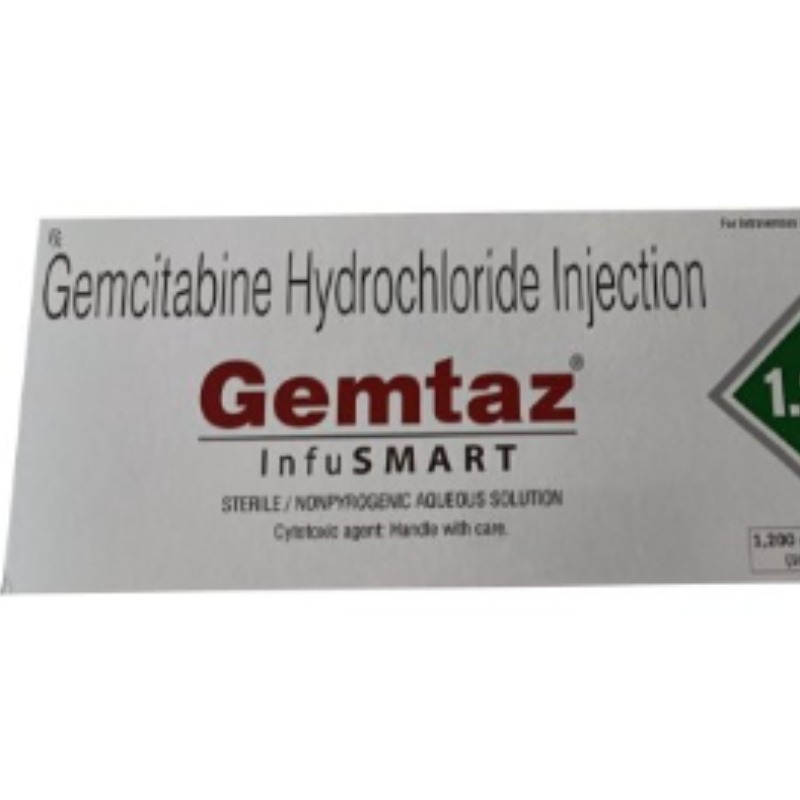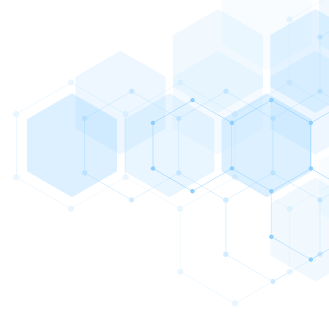DESCRIPTION
CLASSIFICATION Antimetabolite
MECHANISM OF ACTION
• Fluorine-substituted deoxycytidine analog.
• Cell cycle–specific with activity in the S-phase.
• Requires intracellular activation by deoxycytidine kinase to the monophosphate form, with eventual metabolism to the cytotoxic
• gemcitabine triphosphate metabolite. Antitumor activity of gemcitabine is determined by a balance between intracellular activation and degradation and the formation of cytotoxic triphosphate metabolites.
• Incorporation of the gemcitabine triphosphate metabolite into DNA,
• resulting in chain termination and inhibition of DNA synthesis and
• function.
• Triphosphate metabolite inhibits DNA polymerases 𝛂, β, and γ, which, in turn, interferes with DNA synthesis, DNA repair, and DNA chain elongation.
• Inhibition of the enzyme ribonucleotide reductase by both gemcitabine triphosphate and gemcitabine disphosphate, resulting in decreased levels of essential deoxyribonucleotides for DNA synthesis and function.
• Incorporation of the gemcitabine triphosphate into RNA, resulting in alterations in RNA processing and mRNA translation.
ABSORPTION
Poor oral bioavailability as a result of extensive deamination within the GI tract. Administered only via the IV route.
DISTRIBUTION
With infusions < 70 minutes, gemcitabine is not extensively distributed. In contrast, with longer infusions, gemcitabine is slowly and widely distributed into body tissues. Does not cross the blood–brain barrier. Binding to plasma proteins is negligible.
INDICATIONS
• Pancreatic cancer—FDA-approved as monotherapy or in combination with erlotinib for first-line treatment of locally advanced or metastatic disease.
• Pancreatic cancer—FDA-approved in combination with Abraxane for first-line treatment of metastatic disease.
• NSCLC—FDA-approved in combination with cisplatin for treatment of inoperable, locally advanced, or metastatic disease.
• Breast cancer—FDA-approved in combination with paclitaxel for first-line treatment of metastatic breast cancer after failure of prior anthracycline- containing adjuvant chemotherapy.
• Ovarian cancer—FDA-approved in combination with carboplatin for patients with advanced ovarian cancer that has relapsed at least 6 months after completion of platinum-based therapy.
• Bladder cancer.
• Soft tissue sarcoma.
• Hodgkin’s lymphoma.
• Non-Hodgkin’s lymphoma.
DOSAGE RANGE
• Pancreatic cancer: 1,000 mg/m2 IV every week for 7 weeks with 1-week rest. Treatment then continues weekly for 3 weeks
followed by 1-week rest.
• Pancreatic cancer: 1,000 mg/m2 IV on days 1, 8, and 15 in combination with Abraxane 125 mg/m2 IV on days 1, 8, and 15 with
cycles repeated every 28 days.
• Bladder cancer: 1,000 mg/m2 IV on days 1, 8, and 15 every 28 days.
• NSCLC: 1,200 mg/m2 IV on days 1, 8, and 15 every 28 days
DRUG INTERACTIONS 1
Cisplatin—Gemcitabine enhances the cytotoxicity of cisplatin by increasing the formation of cytotoxic platinum-DNA adducts
DRUG INTERACTIONS 2
Radiation therapy—Gemcitabine is a potent radiosensitizer.
SPECIAL CONSIDERATIONS
• Monitor CBCs on a regular basis during therapy. Dose reduction is recommended based on the degree of hematologic toxicity.
• Use with caution in patients with abnormal liver and/or renal function. Dose modification should be considered in this setting, as there is an increased risk for toxicity.
• Use with caution in women and in elderly patients, as gemcitabine clearance is decreased.
• Pregnancy category D. Breastfeeding should be avoided.
TOXICITY 1
Myelosuppression is dose-limiting. Neutropenia more common than thrombocytopenia. Nadir occurs by days 10–14, with recovery by day 21.
TOXICITY 2
Nausea and vomiting. Usually mild to moderate, occur in 70% of patients. Diarrhea and/or mucositis observed in 15%–20% of patients.
TOXICITY 3
Flu-like syndrome manifested by fever, malaise, chills, headache, and myalgias. Seen in 20% of patients. Fever, in the absence of infection, develops in 40% of patients within the first 6–12 hours after treatment but generally is mild.
TOXICITY Ł
Transient hepatic dysfunction with elevation of serum transaminases and bilirubin.
TOXICITY 5
Pulmonary toxicity in the form of mild dyspnea and drug-induced pneumonitis. ARDS has been
reported rarely.
TOXICITY 6
Infusion reaction presents as flushing, facial swelling, headache, dyspnea, and/ or hypotension. Usually related to the rate of infusion and resolves with slowing or discontinuation of infusion.
TOXICITY 7
Mild proteinuria and hematuria. In rare cases, renal microangiopathy syndromes, including hemolytic-uremic syndrome (HUS) and thrombotic thrombocytopenic purpura (TTP), have been reported.
TOXICITY 8
Maculopapular skin rash with pruritus generally involving the trunk and extremities. Peripheral edema involving the lower extremities, which can be asymptomatic or, in some cases, painful and tender. Radiation-recall dermatitis may occur. Alopecia is rarely observed.
SPECIFICATION


Login To Comment